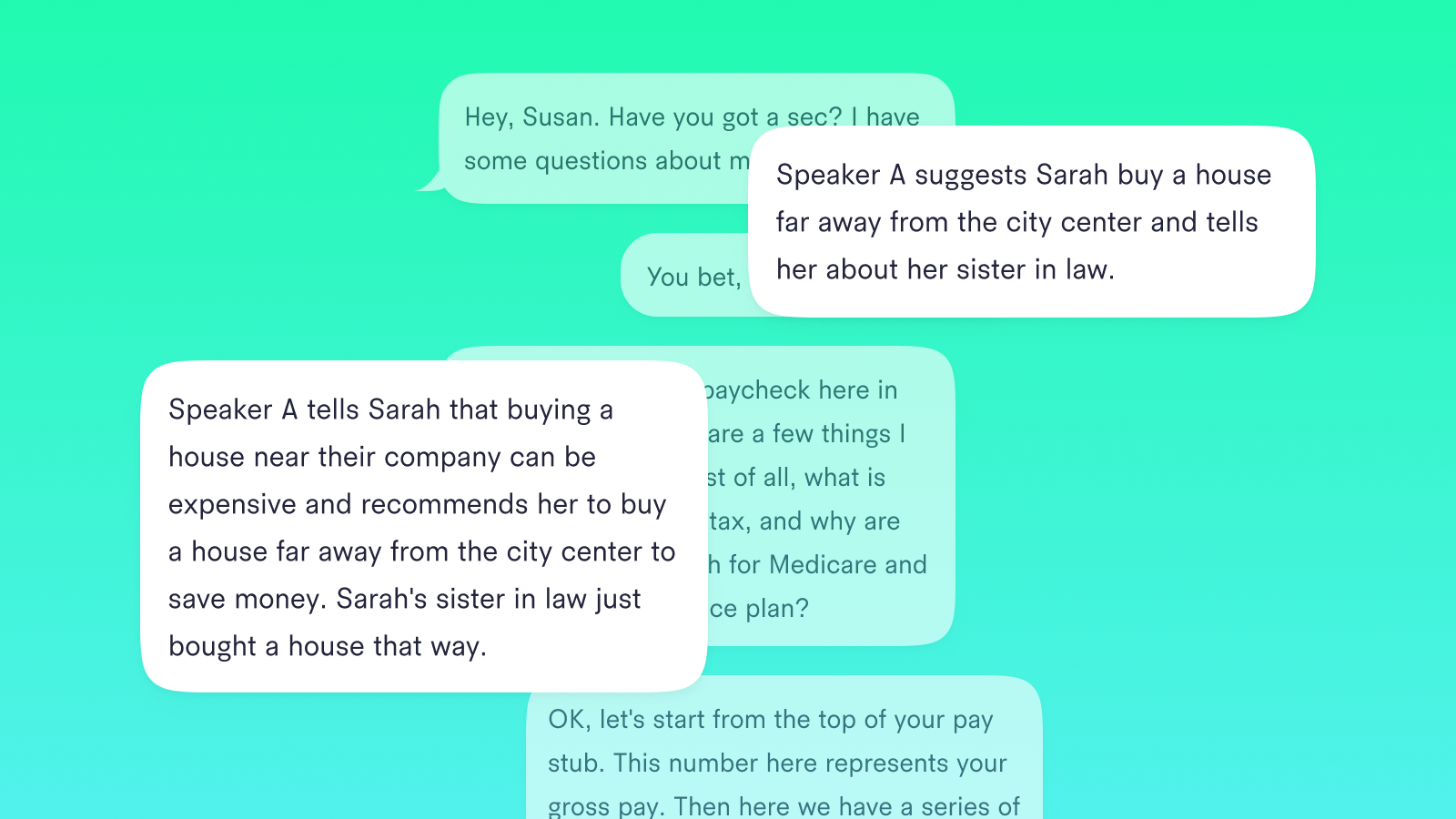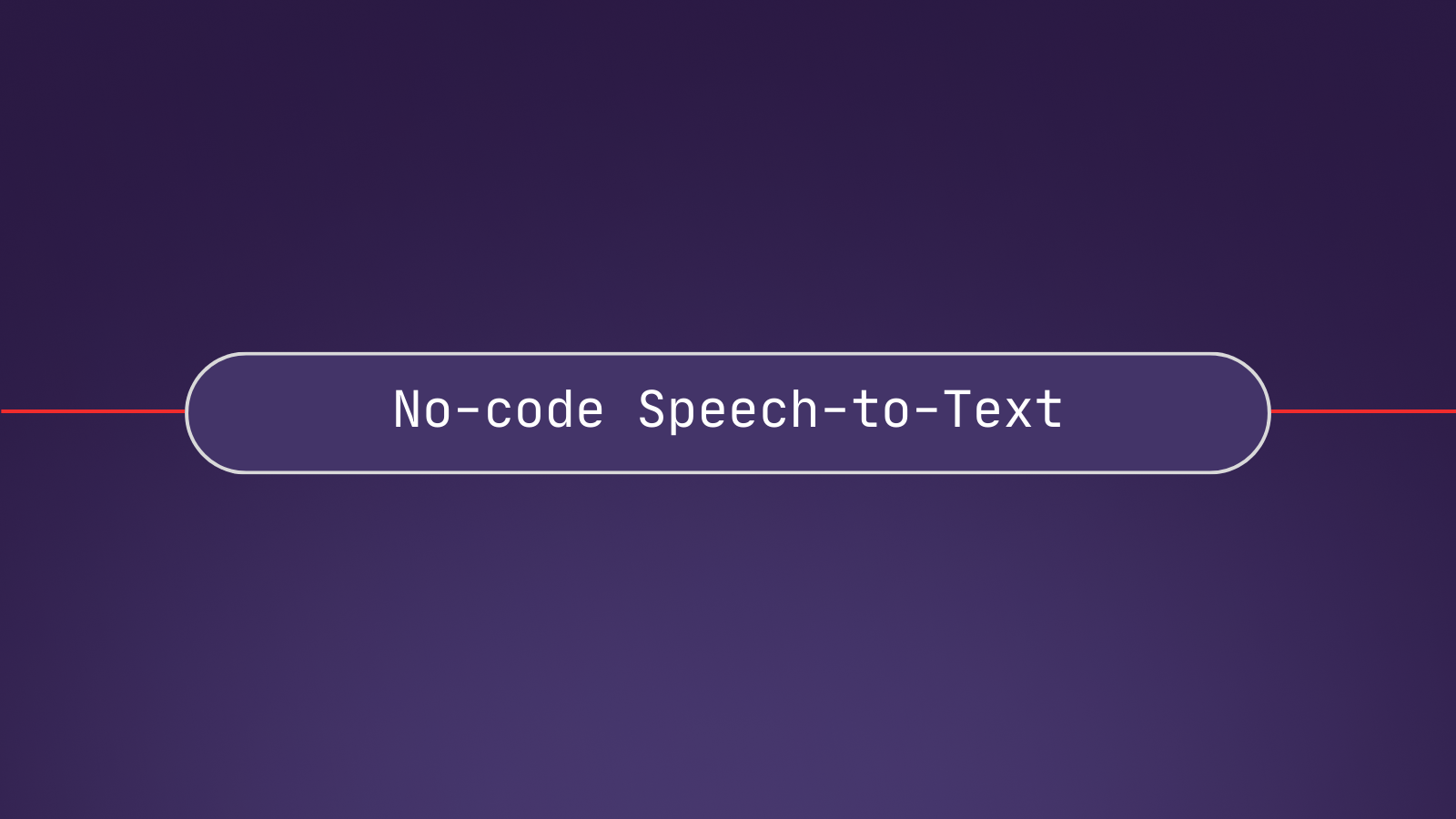Sales, marketing, and customer success teams need end-to-end deal visibility to win in today’s hypercompetitive market. Intelligent call coaching features, powered by top revenue intelligence platforms, can help by providing sales and support representatives with call-specific insights and guidance that aid interactions with customers and leads.
However, call coaching features are only as helpful as the accuracy of the data being fed into the analytical algorithms from which they are generated. For example, during a recent audit of data, one bank found that 63% of entered disposition codes–which their representatives use to summarize the content of a call–were incorrect. If the bank uses low-quality data to inform future training and coaching, they are wasting their representatives' time by training/retraining on the wrong topic, technique, or strategy.
To solve this problem, some revenue intelligence platforms are adopting an AI-first approach to build competitive call coaching features. This includes embedding AI Summarization models that are purpose-built for understanding conversations.
What are AI summarization models for call coaching?
AI summarization models leverage state-of-the-art AI research to distill large bodies of text into their most important takeaways. AI Summarization models can also be applied to audio or video streams to generate accurate summaries of phone calls, podcasts, YouTube videos, and more.
For example, AssemblyAI’s AI Summarization models are trained on enormous amounts of real-world conversational data, making them a powerful tool for summarization at scale.
In addition, the latest release of AssemblyAI's Summarization models include a Conversational Summarization Model purpose-built for two person conversations such as phone calls, interviews, and meetings.
Take this sample conversation as an example:
Speaker A: Hey, Susan. Have you got a sec? I have some questions about
my paycheck.
Speaker B: You bet, Emily. Pull up a chair.
Speaker A: Well, this is my first paycheck here in the States and there
are a few things I don't understand. First of all, what is this FICA,
and SUI Y tax, and why are there deductions both for Medicare and for
my health insurance plan?
Speaker B: OK, let's start from the top of your pay stub. This number
here represents your gross pay. Then here we have a series of
deductions. First off are the federal ones. FICA stands for Federal
Insurance Contribution Act, or something like that. It's your federal
income tax. And then there's Social Security and Medicare, which are
both federal programs to help you out after you retire or if you were
unable to work.
Speaker A: All right, I see. So the Medicare isn't actually a health
insurance I can use now.
Speaker B: That's right. Below the federal deductions are the state
deductions. There's the state income tax, and then this SUI/SDI tax you
were asking about is paying into an unemployment and disability fund
that our state has set up, but you can see it's a pretty small quantity
that they take.
Speaker A: Yeah, I don't mind giving them a dollar fifty for that. So
there are two separate income taxes,one at a state level and one at a
federal level?
Speaker B: That's right. Not all states have an income tax. Some use
higher property taxes or sales taxes instead.
Speaker A: I see. All right, well I think everything else I can figure
out on my own. The deductions for health insurance and my 401(K) are
pretty self-explanatory. Thanks for your help, Susan.
Speaker B: No problem! All those deductions do add up, and nobody's net
pay is as high as they'd like. I can understand why you'd want some
explanation.
Speaker A: Yeah, I guess it's the same in the UK, I just never paid
much attention. See you later! If we apply AssemblyAI’s Conversational Summarization Model and selected headline , we would see the following summary returned:
Emily asks Susan some questions about her paycheck in the States and Susan explains the deductions for Medicare and for her health insurance plan.If we apply AssemblyAI’s Conversational Summarization Model and selected paragraph , we would see the following summary returned:
Emily is asking Susan about her first paycheck in the States. Susan explains the FICA, SUI Y tax, the state income tax, and the SUI/SDI tax to her.When using AssemblyAI's Conversational Summarization Model, product teams or developers can choose to have their summaries returned in one of four formats: bullets, bullets verbose, paragraph, or headline.
The Conversational Summarization Model also requires Speaker Diarization, or speaker labels, to be enabled in order to return summaries that can directly reference key points made by each speaker.
Now that we have a better understanding of what AI Summarization models are, let’s look more closely at the ways that these models can serve as powerful building blocks for call coaching features.
3 ways AI Summarization models can help build better call coaching features
Incorporating an AI Summarization model built for conversations into call coaching features can help provide critical product differentiation for product teams. Let’s look at the top three ways how:
1. Efficiently review sales calls
First, AI Summarization models can make it faster to review sales calls at scale, without sacrificing quality and accuracy. By providing an intelligent summary of each call, sales reps can quickly skim conversation topics and identify areas of insight. Summaries can also make it easier to flag turns in conversational tone and/or discussion points so representatives know what strategies are most or least effective.
For managers, skimming call content makes QA reviews much more efficient and effective as well. Managers using AI can review a call in a fraction of the time it would have taken them without it, helping them review a larger percentage of their representatives’ calls. In turn, reviewing a larger percentage of calls means that managers can identify trends more accurately and then use this information to take appropriate action and forecast future moves.
2. Increase representative and customer engagement
Second, AI Summarization models help eliminate manual tasks such as note taking. By limiting multitasking during the call, both representatives and customers can be more engaged during calls. In turn, this helps optimize the sale’s team's performance, since they can more effectively hone into talk tracks, identify customer needs/wants, and improve the overall customer experience. Representatives can also use summaries of each conversation to quickly draft relevant follow-ups for each interaction.
Automated summaries can even be auto-programmed into a CRM, helping provide quick digests of each conversation for future reference and analysis. Here’s a few examples of what a dashboard built with AI-powered summaries could look like.
Sample of the call transcript:
Bullet summary of the conversation:
Paragraph summary of the conversation:
3. Enable efficient context sharing
Finally, call coaching features built with AI Summarization help make context sharing more efficient between product teams, marketing teams, and others who are invested in customer data. By maintaining a repository of call summaries, teams can quickly scan call content and context without having to watch or listen to a full 30 or 60 minute call. Then, teams can easily share relevant data from these summaries such as customer attitudes, common conversation topics, common complaints or issues, and more.
Real AI-powered summarization use cases
Top startups and enterprises are already incorporating AI Summarization models for conversational data to build powerful competitive features.
A leading call tracking solution, CallRail, uses AI Summarization models to make call transcripts easier to process and integrates this data directly into its CRM. Summarization also helps CallRail's customers identify the key highlights of each call more quickly.
Aloware, a Contact Center Software as a Service, uses AI Summarization models to help its customers intelligently perform QA faster on all recorded calls.
Revenue intelligence platforms are quickly following suit.
AI Summarization and Call Coaching
Call coaching platforms need to ensure accurate visibility into customer data for end users. Powered by state-of-the-art research, AI Summarization models can be embedded into call coaching features to summarize each phone or video conversation. Then, this collected data can be used to help teams better review sales calls for future coaching opportunities, to increase customer/representative engagement and satisfaction, and to identify trends at scale for more informed action.








